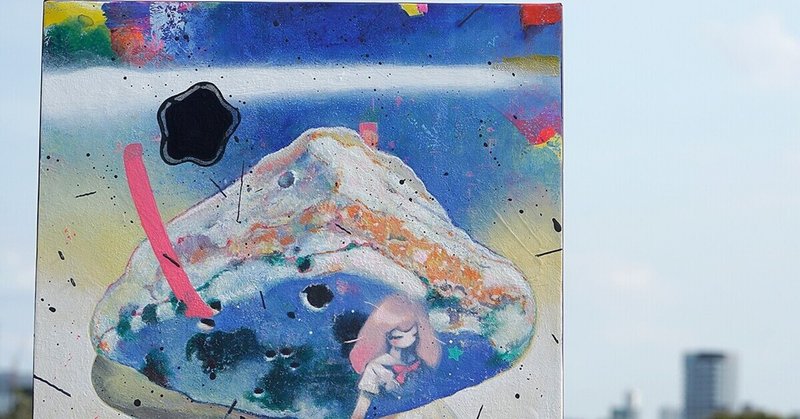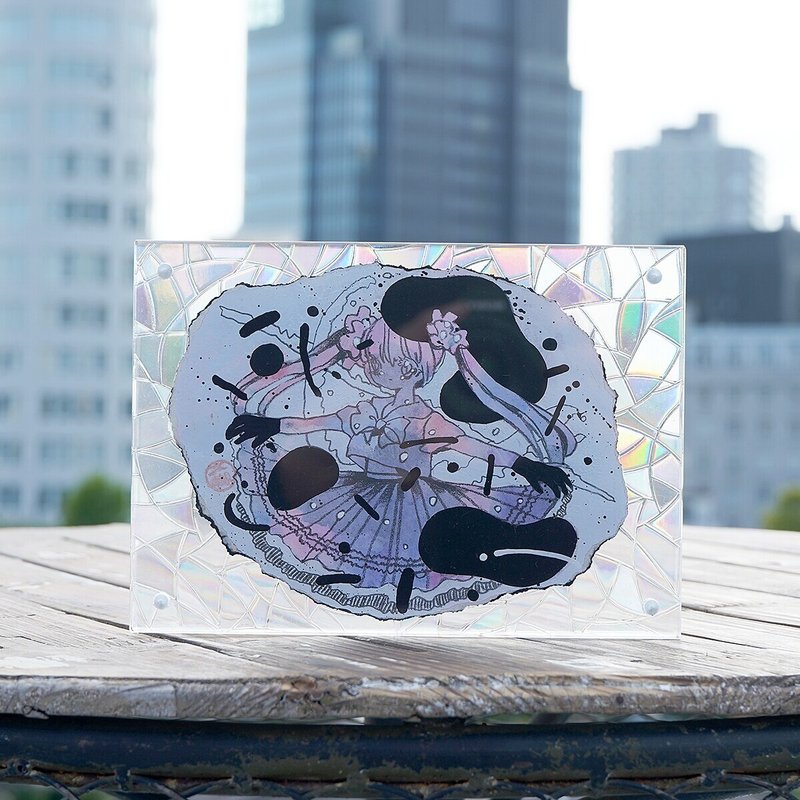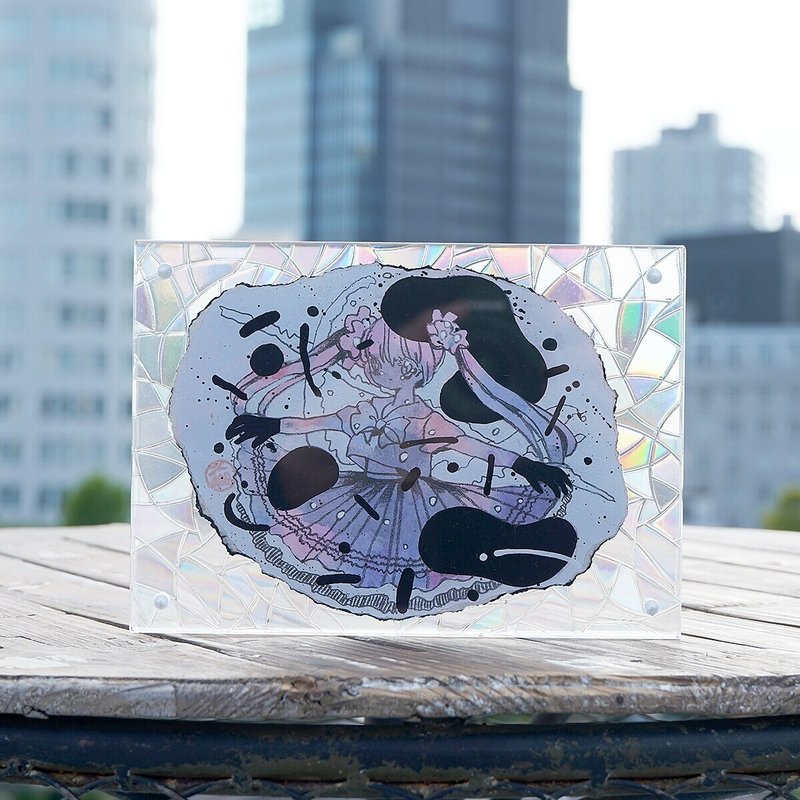
「雲と石 -2021-」大槻香奈ステートメント
「雲と石 -2021-」
この度『雲と石』という個展を行う。今回のテーマは、ひとことで言うなら「心」だ。私は現象を捉えようとするとき、ひとまず「移り変わりゆくもの」と「変わらずそこに留まり続けるもの」でできていると考える。人の心についても同様に、「雲のように移り変わっていく捉えどころのなさ」と、「石のようにかたく決意しぶれないでいること」のふたつの性質を併せ持つものだと考える。前者は当てにならなさ、後者は勇気を持つこと、と言い換えても良いかもしれない。それらを行き来しながら、そのバランスをとるなかで、本当の意味で人は自由になっていくと感じている。
私は今回の展示を通して、目には見えない心の在処を解き明かしたいと考えている。そのひとつのきっかけとして2020年に突如降りかかったコロナ禍がある。コロナによって、私が長年制作テーマとしてきた「から」(空・殻)という概念が大きく揺るがされたのだ。
「から」は中身のない器をイメージすることで、その概念を育ててきた。私の心の空虚さをそこにみると同時に、一方でそこから何か新しいものが生まれる可能性を示す卵の殻的なイメージもあり、自身の精神におけるネガティブとポジティブの両面を表してきた言葉だった。
そもそも私の中に「から」の概念が生まれたのは、2011年の東日本大震災がきっかけに日本の空虚さが改めて露呈したショックによるものだった。震災によって街を抱えていた器が崩壊し、未来のために新たな器を生成しなければならなくなったとき、私はその事象に対して自分の身体ごと感情移入し、「から」を制作テーマの中心に据える必要があったのだ。
しかし昨年、2020年のコロナ禍はそれとは全く違った性質のショックをもたらした。震災のような器の崩壊ではなく、「人間という空っぽの器の中に強制的に得体の知れない中身が入り込んできた」ようなショック。震災と疫病、どちらも人間の生命を脅かす自然現象だが、肉眼で確認できないコロナウイルスは、目に見えないことによって人々を混乱させていたように思う。私も例外ではなく、見えない恐怖を感じていた。今もなおコロナ禍は続いているが、時が経つにつれ、コロナの得体の知れなさは、捉えどころを持たない私たちの「心」のようではないかと考えるようになった。
私にとって、目には見えない心の在処を身体という器の中に実感するのはとても難しい。けれども強制的に身の危険をもたらすものが内側に侵入した時、そこにあるかもしれない「心」の形を確かめられそうな気がしてくる。このコロナの状況下、私が絵画を通してなすべきことは、これまでのような自分という器の外壁としての「から」の形を確かめ安心することではなく、得体のしれない内側、恐れを抱きながらもその中身について、もっと向き合うことではないか?と。
そうして私は、心らしきものを見つめるため、いま自分の絵画に必要なモチーフは何かと考えた。そうして直感的に辿り着いたのが、陶芸作家の木ノ戸久仁子氏による石の作品『稀晶石』だった。陶芸の手法により石が人工的に作られることによって「自然」と「意志」、両極端なふたつの領域をひとつの物質の中に持ち合わせる『稀晶石』は、私の考える心の性質である『雲と石』を体現しているように思えたのだ。
今回、作品の中に心そのものは存在しない。心は鑑賞者の中にあるもので、私が作るのは、心が存在する場所に触れることができる装置としての絵画だ。「身体の器」の中にある「心の器」、「から」の中に存在する新たな「から」との出会いを表現する。いずれ移ろいゆくことを知っていて、それでも現状そこに留まっている「心」について、いま絵画を通して触れることができたのなら、とても幸いに思う。
2021年4月 大槻香奈
※『雲と石』個展は2010年に一度、白白庵の前身である neutron kyoto にて行われた。今回の個展はその2021年版である。
"CLOUDS & STONES" 2021
I am going to hold a solo exhibition called "CLOUDS & STONES". The theme of this exhibition can be summed up in one word: "mind". When I try to understand a phenomenon, I think that it is made up of "things that change" and "things that stay the same". In the same way, I think of the human mind as having two characteristics: "elusive state shifting like a cloud" and "determined and unshakable state like a stone". The former may be described as unreliability, and the latter as having courage. I feel that people become free in the true sense of the word as they move back and forth and find a balance between two of them.
Through this exhibition, I hope to reveal the invisible position of the mind. One of the triggers for this is COVID-19 that struck suddenly in 2020. COVID-19 greatly shook the concept of "kara" (empty, shell), which has been a theme of my works for many years.
I had developed the concept of "kara" by imagining a vessel without contents. I see the emptiness of my heart in it while it has the image of an eggshell that shows the possibility of something new being born from it. The term, "kara", has expressed both the negative and positive sides of my psyche.
The concept of "kara" was originally born in my mind because of the shock of the Great East Japan Earthquake in 2011, which exposed the emptiness of Japan once again. When the vessel that held the cities collapsed due to the disaster and a new vessel had to be created for the future, I had to empathize with the event through my whole body and need to place the term, "kara", at the center of my production theme.
Last year, however, the COVID-19 in 2020 brought a shock consisting of a completely different nature. It was not the collapse of a vessel as in the case of the large earthquake, but a shock as if "an unknown substance had forcibly entered the empty vessel called human beings". Both the earthquake and the epidemic are natural phenomena that threaten human life, but COVID-19, which cannot be seen with the naked eye, seems to have confused people by being invisible. I was no exception and felt the fear of invisibility. The scourge of COVID-19 continues to this day, but as time goes by, I have come to think that the unknowability of COVID-19 is similar to our elusive "mind".
For me, it is very difficult to realize the location of my invisible mind in the vessel, that is, my body. However, when something forcibly invades my body to expose me to danger, I feel as if I can confirm the shape of the "mind" that may be there. In this situation of COVID-19, what I should do through painting is not to confirm and reassure the form of "kara" as the outer wall of the vessel called my body, as I have done so far, but to face more the elusive inside and its content even while being afraid.
Then I thought about what motifs I needed in my paintings to look at what seemed to be "mind". This led me intuitively to the stone work "KISHOU-SEKI (artificial crystal stone)" by ceramic artist KINOTO Kuniko. By artificially creating stones using ceramic techniques, "KISHOU-SEKI" combines the two extreme realms, "nature" and "will", in a single material. And I felt that it embodied my idea of the nature of mind, "CLOUDS & STONES".
This time, the mind itself does not exist in the work. The mind is inside the viewers, and what I am creating is a painting as a device that allows the viewers to touch the place where the mind exists. I express the encounter with "the vessel of the mind" inside "the vessel of the body", and also the new form of "kara" that exists inside "kara". I would be very delighted if I could touch the "mind", that I know will eventually change but still stays there, through my paintings.
OHTSUKI Kana, April 2021
※The solo exhibition "CLOUDS & STONES" was held once in 2010 at neutron kyoto, the predecessor of PAKUPAKUAN. This solo exhibition is its 2021 version.

「雲と石 - 01」Clouds and stones - 01
2021 / H12.8×W17.8×D2.5cm / 紙、アクリル、えんぴつ

「雲と石 - 02」Clouds and stones - 02
2021 / H17.8×W12.8×D2cm / 紙、アクリル、えんぴつ

「雲と石 - 03」Clouds and stones - 03
2021 / H12.8×W17.8×D2.5cm / 紙、アクリル、えんぴつ
この記事が気に入ったらサポートをしてみませんか?
